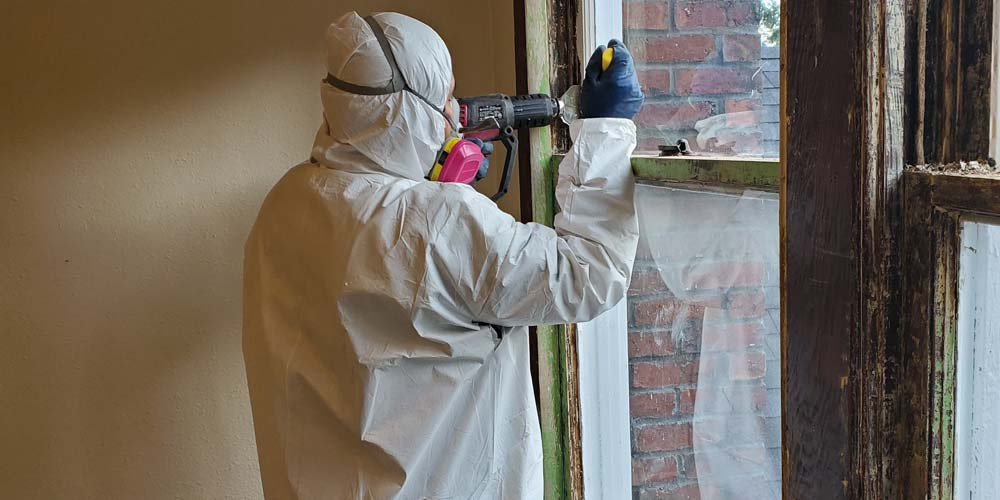Important Tools and Strategies for Efficient Lead Offense Cleaning
Dealing with lead offenses efficiently demands a comprehensive strategy that blends the right tools with critical approaches. Simultaneously, the usage of specialized cleanup devices, such as HEPA vacuum cleaners and lead-specific cleaning agents, is imperative for complete impurity removal. Efficient containment approaches, consisting of plastic sheeting and unfavorable air pressure systems, are vital to stop the spread of hazardous materials.
Individual Protective Equipment
Personal safety devices (PPE) is a vital component in the reliable administration of lead contamination cleaning. The important PPE for lead cleaning includes respirators, safety garments, gloves, and eye defense.
Respirators, particularly those equipped with HEPA filters, are indispensable for filtering system air-borne lead fragments, avoiding breathing. Safety garments, including coveralls and non reusable fits, stops lead dust from adhering to workers' garments, minimizing the threat of secondary contamination.
Additionally, strenuous training on the appropriate use and upkeep of PPE is crucial. Employees have to be informed on wearing and doffing treatments to avoid contamination. Regular evaluations and substitutes of PPE parts are necessary to maintain their safety capabilities, making sure a risk-free and compliant cleaning operation.
Specialized Clean-up Equipment

One more important device is the wet/dry vacuum, which can properly tidy up both dust and fluid pollutants. These vacuum cleaners frequently feature HEPA filters to give an extra layer of safety. Damp cleans or tack cloths are additionally important for surface area cleaning; they are specifically developed to capture and hold lead fragments, lowering the risk of spreading contamination.
For more persistent down payments, specialized lead-removal cleaning representatives are needed. These agents are created to break down lead bits, making them simpler to remove. Scrub brushes with sturdy bristles can help in this process, specifically on rough surfaces where lead dust often tends to stick a lot more highly.
Furthermore, encapsulants are used to seal lead-contaminated surface areas, avoiding the launch of lead dirt. These specialized paints and layers are developed to abide by different substrates, giving a lasting solution for lead control.
Reliable Containment Techniques
Reliable containment approaches are vital in mitigating the spread of lead contamination throughout clean-up tasks. Executing robust control approaches makes certain that lead bits do not migrate to unaffected locations, therefore protecting both workers and the atmosphere see post (DOH & HPD Lead Violation Removal NYC).

To enhance containment, encapsulants can be put on surface areas that are not being gotten rid of or disrupted. These specialized coverings bind lead dust, reducing its accessibility for resuspension. Additionally, all personnel must wear proper Personal Protective Tools (PPE), including respirators and disposable matches, to stop contamination spread.
Safe Disposal Practices
Making certain risk-free disposal practices is an important component in the management of lead contamination clean-up. Correct disposal minimizes the threat of lead re-entering the atmosphere and endangering hop over to these guys public health. The initial step is to recognize and set apart lead-contaminated waste from other products. Secure containment utilizing sturdy, watertight containers is important to stop spillage throughout transport.
Transporting lead waste requires adherence to stringent standards. Using licensed contaminated materials providers makes sure that the products are handled sensibly. Paperwork, consisting of shows up describing the kind and amount of waste, must come with shipments to track the waste from the website of beginning to its last disposal destination.
Designated hazardous waste disposal centers are outfitted to manage lead-contaminated materials securely. These facilities frequently employ sophisticated approaches such as stabilization, solidification, or chemical treatment to neutralize the lead before disposal. Landfilling in click here for info specialized, lined locations that stop leachate from contaminating groundwater is a typical practice for final disposal.
Routine training for employees entailed in lead garbage disposal is crucial to maintain safety requirements and protect against accidental exposure. By adhering to these practices, companies can significantly minimize the environmental and health and wellness influences connected with lead contamination.
Regulatory Compliance Tips

Complying with governing conformity is extremely important in the successful implementation of lead contamination cleanup. Recognizing and following government, state, and neighborhood regulations guarantees not only the safety and wellness of individuals yet likewise the lawful and monetary wellness of the cleaning company. The Environmental Defense Firm (EPA) establishes stringent requirements, such as the Lead Improvement, Repair Service, and Painting (RRP) Rule, which mandates appropriate qualification and training for contractors managing lead-based activities.
Conformity begins with a detailed analysis of relevant laws and regulations. Organizations needs to remain updated on any kind of legislative modifications, which can be assisted in via normal training sessions and registering for market updates. Paperwork is an additional crucial conformity facet; maintaining detailed documents of all activities, consisting of evaluation reports, worker training logs, and disposal manifests, is crucial.
In addition, involving with licensed lead assessors or run the risk of assessors makes sure that lead dangers are properly recognized and alleviated. Companies have to enforce the usage of Individual Safety Tools (PPE) and guarantee that safety and security methods are strictly followed. Last but not least, transparent communication with stakeholders, consisting of staff members, clients, and regulatory bodies, will certainly cultivate a culture of conformity and responsibility, ultimately adding to a more secure and a lot more reliable lead cleaning process.
Conclusion
Reliable lead offense cleanup demands the assimilation of specialized tools and critical techniques to guarantee security and effectiveness. Making use of HEPA vacuum cleaners, specialized cleansing agents, and reliable containment techniques such as plastic bed linen and negative atmospheric pressure systems is crucial. Personal protective equipment (PPE) safeguards workers from exposure, while secure disposal methods and rigorous adherence to regulatory compliance are essential for responsibly handling hazardous waste. Jointly, these measures considerably mitigate wellness risks and contribute to a cleaner environment.